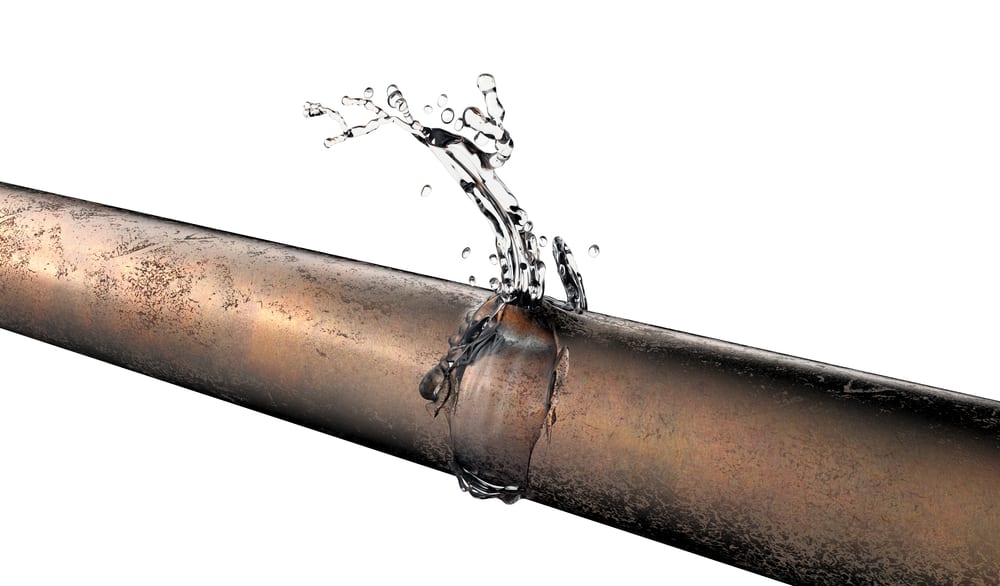6 Effective Techniques for Finding Hidden Water Line Leaks
6 Effective Techniques for Finding Hidden Water Line Leaks
Blog Article
This great article following next pertaining to Detecting hidden plumbing leaks is fairly attention-grabbing. You should look it over.

Early detection of leaking water lines can mitigate a possible calamity. Some little water leakages might not be visible.
1. Analyze the Water Meter
Every residence has a water meter. Inspecting it is a surefire way that aids you uncover leakages. For beginners, shut off all the water resources. Make sure no one will flush, utilize the faucet, shower, run the washing machine or dishwasher. From there, most likely to the meter and also watch if it will certainly alter. Because no one is utilizing it, there must be no movements. If it moves, that shows a fast-moving leak. If you spot no changes, wait a hr or 2 and also examine back once more. This suggests you may have a sluggish leakage that can also be underground.
2. Check Water Intake
Examine your water costs and also track your water consumption. As the one paying it, you should observe if there are any type of discrepancies. If you find sudden changes, in spite of your usage coinciding, it suggests that you have leakages in your plumbing system. Bear in mind, your water expense must fall under the same array on a monthly basis. An abrupt spike in your expense indicates a fast-moving leakage.
On the other hand, a consistent rise on a monthly basis, despite having the very same behaviors, reveals you have a slow-moving leakage that's additionally gradually intensifying. Call a plumber to completely examine your residential or commercial property, especially if you feel a cozy location on your flooring with piping beneath.
3. Do a Food Coloring Examination
When it comes to water usage, 30% comes from commodes. Examination to see if they are running properly. Decline flecks of food color in the container and wait 10 mins. There's a leakage in between the tank as well as dish if the shade in some way infiltrates your bowl during that time without flushing.
4. Asses Exterior Lines
Don't neglect to inspect your exterior water lines also. Ought to water seep out of the connection, you have a loosened rubber gasket. One little leak can waste tons of water and also spike your water costs.
5. Examine and also Examine the Situation
Home owners need to make it a practice to examine under the sink counters and even inside cupboards for any kind of bad odor or mold growth. These two warnings show a leakage so prompt attention is needed. Doing routine inspections, even bi-annually, can save you from a major problem.
Examine for discolorations as well as deteriorating as most pipes and home appliances have a life expectations. If you believe dripping water lines in your plumbing system, do not wait for it to rise.
Early discovery of dripping water lines can minimize a possible calamity. Some tiny water leakages may not be noticeable. Checking it is a surefire way that helps you uncover leakages. One tiny leak can waste tons of water and surge your water expense.
If you believe dripping water lines in your plumbing system, don't wait for it to escalate.
How to Know If Your Home Has a Hidden Leak
Water Meter Reveals Inexplicable Water Usage
If you’d like to test whether or not there’s a leak somewhere in your home, you can do this using your water meter. Here is how to conduct the test:
Don’t use any water in your home for at least 30 minutes; this also means not turning on faucets or water-using appliances.
Go outside, and check your water meter for activity.
If your water meter shows that there was activity, even though no one was using any water, this proves that there is a leak in your home.Visible Mold or Mildew Growth
Leaks behind walls create moist, dark environments that allow mold and mildew to grow and thrive. Eventually, you might see mold growth forming on the wall closest to a hidden leak.
If mold is growing in an area that receives a high amount of moisture, such as a bathroom, it may simply be an indication that better ventilation is needed. However, if you see mold growth on a wall or the ceiling in an area where you would not expect, you probably have a hidden leak.
Musty, Mildew Odor
Sometimes you might not be able to see the mold or mildew that is growing as a result of a leak. However, the smell can give the problem away just as easily. If you catch a whiff of something musty, there’s a good chance that old water is collecting somewhere in your home that you can’t see.
Stained/Warped Walls, Ceilings, or Floors
When your home soaks up water, a variety of red flags can become visible, including ceiling stains, bubbling drywall, warped walls, and sagging floors. While these issues can be caused by excess humidity, they can also be signs that a pipe or plumbing connection has started leaking behind your walls.
Inexplicably High Water Bill
After a while, you get a general sense for what your water bill should be. If you own a pool or sprinkler system, your bill will tend to be higher during summer. However, if you receive a water bill that seems especially high, and you can’t figure out what caused it, then you may have a hidden leak somewhere that’s increasing your bill.
https://www.plumbingjoint.com/blog/2019/july/how-to-know-if-your-home-has-a-hidden-leak/

Do you enjoy reading about Leaking water lines? Post a remark further down. We would be interested to see your thoughts about this blog. We hope that you visit us again later on. Be sure to take the opportunity to distribute this content if you enjoyed it. Kudos for your time. Visit us again soon.
Professional-grade solutions. Report this page